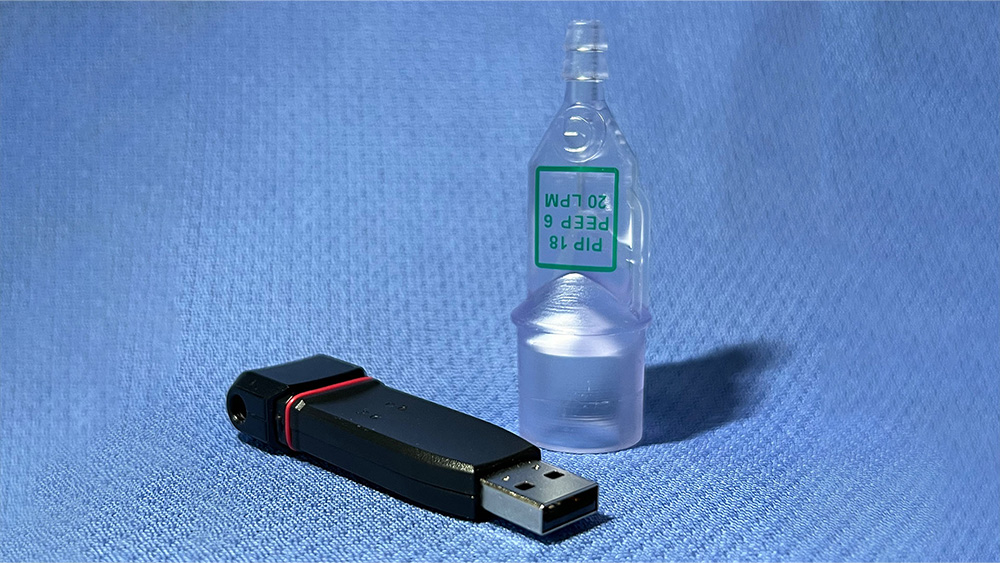
Researchers are testing the use of an easy-to-use portable ventilator (pictured above, next to USB stick for scale) in patients with mild and moderate lung injury.

Researchers are testing the use of an easy-to-use portable ventilator (pictured above, next to USB stick for scale) in patients with mild and moderate lung injury.
What you need to know
Ventilators are important machines that can help people breathe when their lungs are damaged. Although these machines are useful, they are very large, take time to make, and are difficult to use.
The COVID-19 pandemic has caused a shortage of ventilators in hospitals because so many patients have needed to use them at the same time. In a recent study, researchers from the NIH Clinical Center joined with engineers, respiratory therapists, and patient advocates to develop a portable respirator that is easy to use and can be 3D-printed for easy manufacturing and distribution.
What did the researchers do?
Traditional respirators work like bellows. They fill with air and force that air into the patient’s lungs. The air then leaves the lungs on its own, completing the respiratory cycle. To perform this function properly, ventilators are large and made of lots of different parts. They cannot be easily transported and require lots of training to use.
The researchers were able to design a portable ventilator approximately 1 inch wide and 3 inches long. The ventilator is simple in design and can be made easily by a 3D printer. The ventilator is connected to an air supply and can automatically move between the stages of respiration by adjusting airflow based on how much pressure is at the patient’s airway.
Three different portable ventilators were designed for mild, moderate, or severe levels of lung injury. To test the ventilators, researchers connected each of them to a lung simulator that could reproduce a range of lung conditions reported in patients with COVID-19. They also used the ventilator in pigs with lung injuries. In both situations, the ventilators were able to support respiration in lungs with mild and moderate injuries.
Why is this research important?
These new ventilators still need to be tested in people and are not a permanent substitute for traditional ventilators. However, if they prove effective, they may allow hospitals to reserve traditional ventilators for patients with more severe conditions and prevent ventilator shortages. Beyond their use during the COVID-19 pandemic, these new ventilators may also be useful for battlefield casualties, emergency transport, or victims at disaster sites where traditional ventilators cannot be used.
Where can I go to learn more?
Clinical Center Doctors Testing 3D-Printed Miniature Ventilator
-
NIH Clinical Center CEO James K. Gilman, M.D., highlights this study on the NIH Director’s Blog.
-
Learn more about the ventilators currently used in hospitals from the National Heart, Lung, and Blood Institute (NHLBI).
-
NHLBI shares information about how COVID-19 affects the lungs.
Sources
Pritchard, W. F., Karanian, J. W., Jung, C., Bakhutashvili, I., Reed, S. L., Starost, M. F., Froelke, B. R., Barnes, T. R., Stevenson, D., Mendoza, A., Eckstein, D. J., Wood, B. J., Walsh, B. K., & Mannes, A. J. (2022). In-line miniature 3D-printed pressure-cycled ventilator maintains respiratory homeostasis in swine with induced acute pulmonary injury. Science Translational Medicine, 14(666), eabm8351. https://doi.org/10.1126/scitranslmed.abm8351

News and Stories
Read stories about the efforts underway to prevent, detect, and treat COVID-19 and its effects on our health.
 An official website of the United States government
An official website of the United States government

